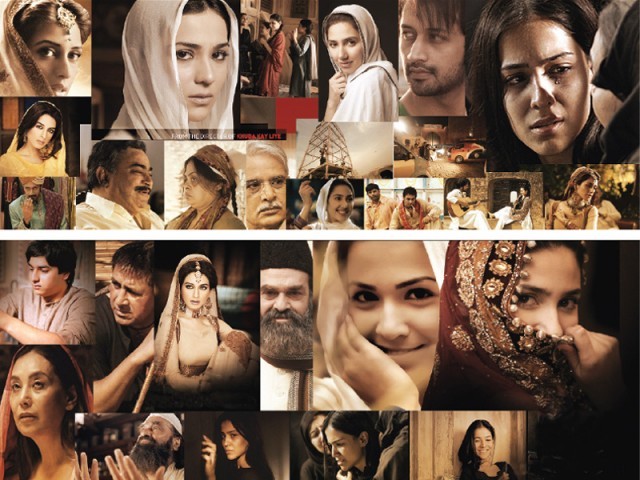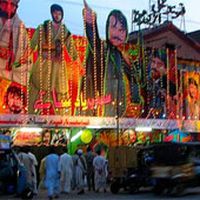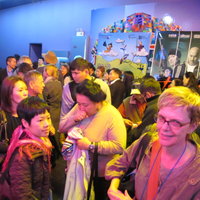A New Hope
 A country that is having to make important decisions on how to fight the terrorist threat, relations with its neighbour, its healthcare system, even its Cricket affairs, Pakistan is at a crossroads again – this time with the state of its film industry. Analysts , industry insiders, even tarot card readers, are regularly on TV talk shows, dispensing their two cents on what is making the industry tick (not) and what everyone needs to do about it.
A country that is having to make important decisions on how to fight the terrorist threat, relations with its neighbour, its healthcare system, even its Cricket affairs, Pakistan is at a crossroads again – this time with the state of its film industry. Analysts , industry insiders, even tarot card readers, are regularly on TV talk shows, dispensing their two cents on what is making the industry tick (not) and what everyone needs to do about it.[caption id="attachment_6756" align="aligncenter" width="576"]
A bit of background: In yesteryears, Lollywood (inspired by Hollywood inspired Bollywood) was a successful industry and Sultan Rahi – Pakistan’s own Chuck Norris – and Wahid Murad’s chocolate heroism went head to head with Bollywood blockbusters. In the late 80’s and 90’s, Bollywood still dominated, but Lollywood seemed to have found its foothold in the countries culture by giving rise to stars such as Javed Sheikh, Reema, Meera, Jan Rambo, Shaan and Zeba Bakhtiar. A decade later the engines faltered dramatically; the once garishly decorated cinemas were either shutting down or playing sporadic releases for weeks on end to attract any audience. Lahore’s popular studio was reduced to a shadow of its former glory, only a fraction of its premises being used regularly when in the past, directors could hardly find a slot to book its solitary park and walkway on which the actors would dance and frolic.
In 2011, the film industry made its boldest moves yet in its quest for resurrection. Soundtracks for Bol, Shoaib Mansoor’s second effort after the well received Khuda Kay Liye in 2008, went on sale with a message on the back asking people to support the ‘Revival of Cinema’ in Pakistan. The statement was then taken up by Reema in her interactions with the press as she promoted her directorial debut, Love Mein Ghoom. Now it has come to represent a phenomenon, much like ‘British Invasion’ in the music scene of the 1960’s or ‘The New Wave’ which labeled the new direction of Hollywood heralded by Martin Scorsese, George Lucas and Terence Malick in the 1970’s.
But is the ‘Revival of Cinema’ in Pakistan actually real?
It’s a polarizing topic to say the least. Sean Ali, director of the recently released film Fatima, claims it is more akin to a revolution. Pakistan, he says is moving away from traditional Lollywood movies and is making films that are closer to reality. The new filmmakers, he says, are exploring a diverse range of topics and trying out new things - his own film has created Pakistan’s first Digital Poster.
And it is true. Slackistan was about neurasthenia (Americanitis, for those that could see it) in Islamabad, Fatima is about a modern day Fatima Jinnah, Ramchand Pakistani told of a boy learning to cope after his mother is imprisoned across the border in India, even Bhai Log (dreadful as it may be) attempted to tackle gang warfare in Pakistan’s largest city, Karachi.
Filmmakers it seems are also daring to challenge cultural norms – or at least flirt with them until they submit. Showing skin used to be a no no in the Islamic state. But between Bollywood’s cultural export and Lollywood’s own raunchy leanings, actresses are now more comfortable with short skirts and tube tops. Language too has receded from the lofty seat of poetry Urdu sat on and is taking the form that most people are familiar with. But any sound of swearing unleashes the Censor Board.
And the Censor Board is a parent with a twisted sense of conservatism indeed. A few months ago, the much hyped Bollywood film Delhi Belly was banned from being screened at theatres just a day before its release. The reasoning: indecent language. The ‘exotic’ dances though in Pashtu and Punjabi films pass through screening without a thought. Which is weird because Pakistan has plenty of slick talking people that can swear up a storm, but this author has yet to see a woman that parades around in semi-transparent clothing. Which is why Sean Ali politely advises that it would be an unintelligent move to venture into nudity just yet, as some filmmakers have already experienced.
So far there are a number of releases that plan to have dotted the calendar. In 2011 Bol and Love Mein Ghoom premiered to much publicity, and Bhai Log too, with its hopeless storyline and acting, did stir some interest. Two months to go before the Islamic month of Muharram, when most entertainment happenings prefer to hibernate, there were over a half dozen films aiming to claim a release date.
And that is the point that Faisal Quraishi stresses on when brushing off claims of a revival. ‘You can’t have a revival with two, four, or half dozen films. You need at least fifty films, every year for it to be a revival’. As the man that commissions what is considered the most widely read entertainment publication in Pakistan, DAWN Images, Faisal Quraishi has heard a lot about the topic.
‘Pakistan has an audience that has become very used to the quality of films produced by Hollywood and Bollywood; can filmmakers here deliver that quality?’
From production standards to script, he says, few of the local film makers have managed to grasp what the audience will appreciate.
Which leads to an important question – is a revival of cinema, the revival of film making or the business of film making?
Acclaimed as it may be, hardly anyone but the very trendy have seen Slackistan – it wasn’t screened in theatres. Same is the case with Ramchand Pakistani, Zibahkhana, and any of the other movies made over the last few years. Actual statistics are hard to confirm because of the rampant piracy in the country, but take a walk on the street and talk to the people. ‘Bol is supposed to be a good movie’ they will say. Supposed to be, because less than half of them will have watched it, and Bol is undoubtedly the most successful Pakistani movie in 2011. Few people seem to have heard of Fatima, Waar or Son of Pakistan.
Until Filmmakers are able to afford the big budget marketing and special effects that Hollywood or Bollywood can conjure, movies will have to be marketed through personal meetings with the press, social media or plain old word of mouth. But to get audiences to keep coming to theatres, they are going to have to rely on good scripts, good acting and directors with a grip on narration.
But that is a whole other story. For the time being, the story of how the ‘industry’ fights back is a fodder for a script on its own.
Contributed by Shayan Shakeel
Shayan Shakeel has previously written for Ink, Dawn and the Oklahoma Daily, as well as hosted ‘Salam Pakistan’ for the Indus Network in Pakistan. He is an avid film enthusiast and has previously studied and written about film at the University of Oklahoma.
Similar content
By Kerrine Goh
24 Dec 2013
posted on
13 Aug 2010
posted on
25 Jun 2018
By Kerrine Goh
04 Feb 2011
posted on
17 Mar 2011




